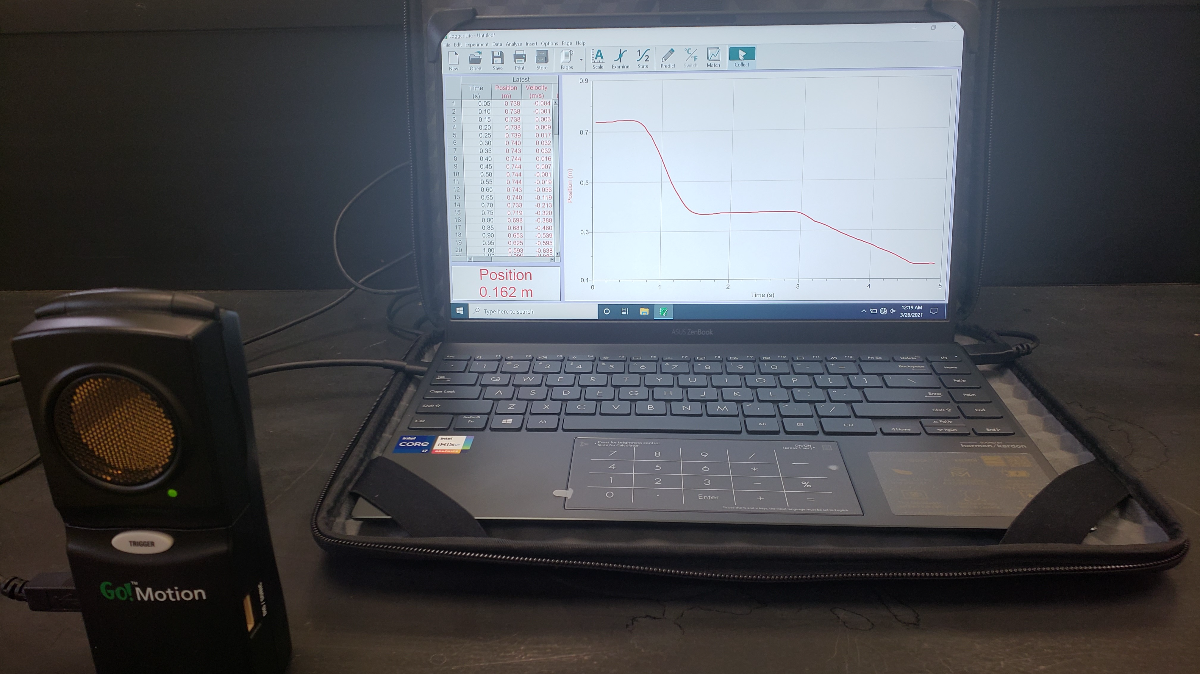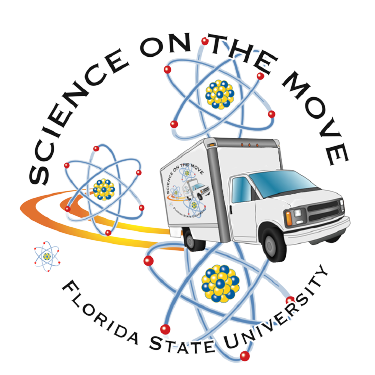Overview
In this investigation, students are given a series of position-time graphs and are challenged to walk in front of a motion detector to recreate the graph. In the process, they gain a deeper understanding of the concepts of position and velocity, as well as graphical representations of data. The investigation ends with an extension to consideration of velocity-time graphs.
- Grades 6-12
- In person only
- Access to a power outlet is required.
In this investigation, students are given a series of position-time graphs and are challenged to walk in front of a motion detector to recreate the graph. In the process, they gain a deeper understanding of the concepts of position and velocity, as well as graphical representations of data. The investigation ends with an extension to consideration of velocity-time graphs.
- Grades 6-12
- In person only
- Access to a power outlet is required.
Materials
- Laptop
- Motion Detector
- Laptop
- Motion Detector
Follow Up and Resources
This can be an effective launch point to dig into other graphical representations of motion. Check out the following for more information.
- Our Sparking Ideas About Uniform Motion investigation which unpacks velocity-time graphs.
- The Moving Man simulation from PhET.
This can be an effective launch point to dig into other graphical representations of motion. Check out the following for more information.
- Our Sparking Ideas About Uniform Motion investigation which unpacks velocity-time graphs.
- The Moving Man simulation from PhET.
Standards
Motion of Objects
- SC.6.P.12.1: Measure and graph distance versus time for an object moving at a constant speed. Interpret this relationship.
Motion
- SC.912.P.12.2: Analyze the motion of an object in terms of its position, velocity, and acceleration (with respect to a frame of reference) as functions of time.
The Practice of Science
- SC.6.N.1.1/SC.7.N.1.1/SC.8.N.1.1: Define a problem from the sixth/seventh/eighth grade curriculum, use appropriate reference materials to support scientific understanding, plan and carry out scientific investigation of various types, such as systematic observations or experiments, identify variables, collect and organize data, interpret data in charts, tables, and graphics, analyze information, make predictions, and defend conclusions.
- SC.912.N.1.1:
- Use tools to gather, analyze, and interpret data (this includes the use of measurement in metric and other systems, and also the generation and interpretation of graphical representations of data, including data tables and graphs), (Collect data or evidence in an organized way. Properly use instruments, equipment, and materials (e.g., scales, probeware, meter sticks, microscopes, computers) including set-up, calibration, technique, maintenance, and storage).
Motion of Objects
- SC.6.P.12.1: Measure and graph distance versus time for an object moving at a constant speed. Interpret this relationship.
Motion
- SC.912.P.12.2: Analyze the motion of an object in terms of its position, velocity, and acceleration (with respect to a frame of reference) as functions of time.
The Practice of Science
- SC.6.N.1.1/SC.7.N.1.1/SC.8.N.1.1: Define a problem from the sixth/seventh/eighth grade curriculum, use appropriate reference materials to support scientific understanding, plan and carry out scientific investigation of various types, such as systematic observations or experiments, identify variables, collect and organize data, interpret data in charts, tables, and graphics, analyze information, make predictions, and defend conclusions.
- SC.912.N.1.1:
- Use tools to gather, analyze, and interpret data (this includes the use of measurement in metric and other systems, and also the generation and interpretation of graphical representations of data, including data tables and graphs), (Collect data or evidence in an organized way. Properly use instruments, equipment, and materials (e.g., scales, probeware, meter sticks, microscopes, computers) including set-up, calibration, technique, maintenance, and storage).



